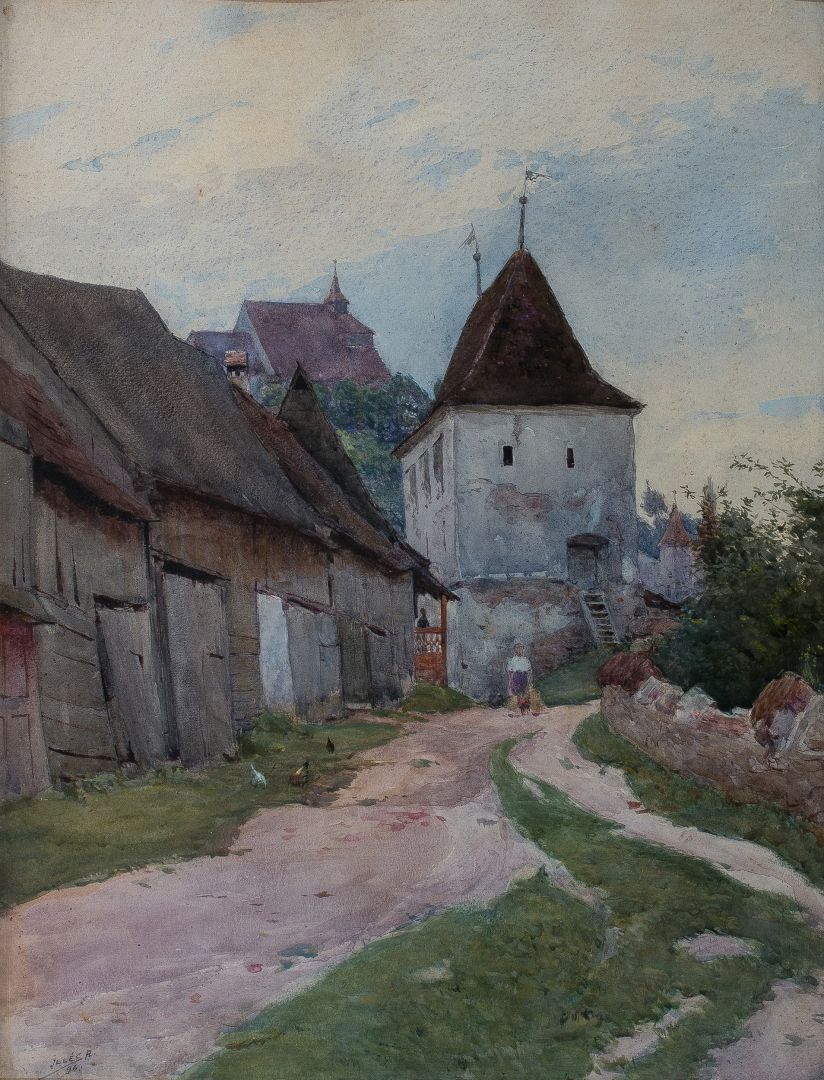Hall 2 - 2. view
Segesvár Section
EDVI ILLÉS, ALADÁR (1870–1958)
Segesvár Section, 1896
watercolour on paper, 52x40 cm; marking at the bottom left: Illés A. 96
Fine Arts Collection, Inv. No.: 53.201.1.
English watercolour painting had a sporadic, but decisive influence on 19th century Hungarian painting. This can primarily be observed in the genre of landscapes, particularly in connection with the artists’ records of their travel experiences. Aladár Edvi Illés was one of the most talented watercolour painters of his generation from the century’s final decades. Following his several years of studies at the Budapest School of Modell Drawing and the Julian Academy in Paris, he visited London and studied the English watercolour masters, whose exemplary art remained a major influence for the rest of his life.
Edvi Illés had his first success with watercolour painting in his apprentice years (1891). The painting titled Segesvár Section, was made in the year of the Hungarian Millennium, during a study trip to Transylvania, which was like part of a small group of artworks depicting the town and its vicinity. We know from accounts of the period that he made several paintings themed around Segesvár during this period (one of which was acquired by Emperor Franz Joseph himself). The selection of the theme suggests a strong interest in history that is intrinsically linked with the unique, picturesque atmosphere of the old Saxon town’s medieval centre, which received monument status in the present day. The small bastion or tower of the Western gatehouse is well identifiable on the naturalist and almost photorealistic painting, with the silhouette of the church being visible atop the castle hill in the background. The style of the composition lacks the light brushstrokes associated with watercolour painting, however, the precise yet patchy application of colours (cool shades of greys, blues, browns and greens) manages to perfectly recreate the ancient atmosphere of the castle area’s street section made up of various grand and rustic buildings, which is a sign of the artist’s mature and confident mastery over his craft. Space is cut off by a winding row of houses on the left which stretches until the vertical centreline of the painting, where it connects to the crumbling wall of the high-roof bastion. On the right side, a short stone wall can be found, with foliage suggesting open space behind it. Small fowls can be seen at the edge of the winding village dirt road and the inclusion of a small human figure in front of the bastion adds a little more life to the painting.
The painting was featured in the 1899 exhibition of the National Salon in Miskolc, where it was purchased by lord lieutenant Elemér Vay, who donated it to the Public Education and Museum Society of Borsod-Miskolc, the institution preceding the Herman Ottó Museum. It was showcased in Budapest by the Society later the same year, and a photography of it was also featured in the weekly newspaper titled Új Idők.
Ákos Barkóczi
